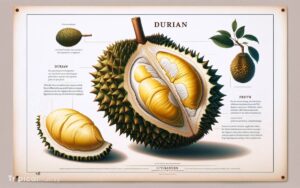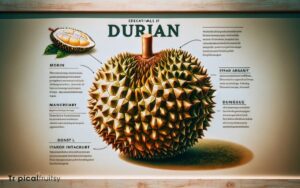How Much Is Mao Shan Wang Durian? Discovering the Price!
The price of Mao Shan Wang durian varies significantly, typically ranging from $15 to $30 per kilogram. Factors such as seasonality, location, and quality play crucial roles in determining the cost.
The Mao Shan Wang durian is prized for its exceptional taste and texture, which commands a premium price in the market.
The main factors affecting its price include:
These aspects are vital for buyers and sellers to consider when dealing with the trade of Mao Shan Wang durians.
Discover the indulgent world of Mao Shan Wang durians, where taste and texture meet in a luxurious fruit experience.
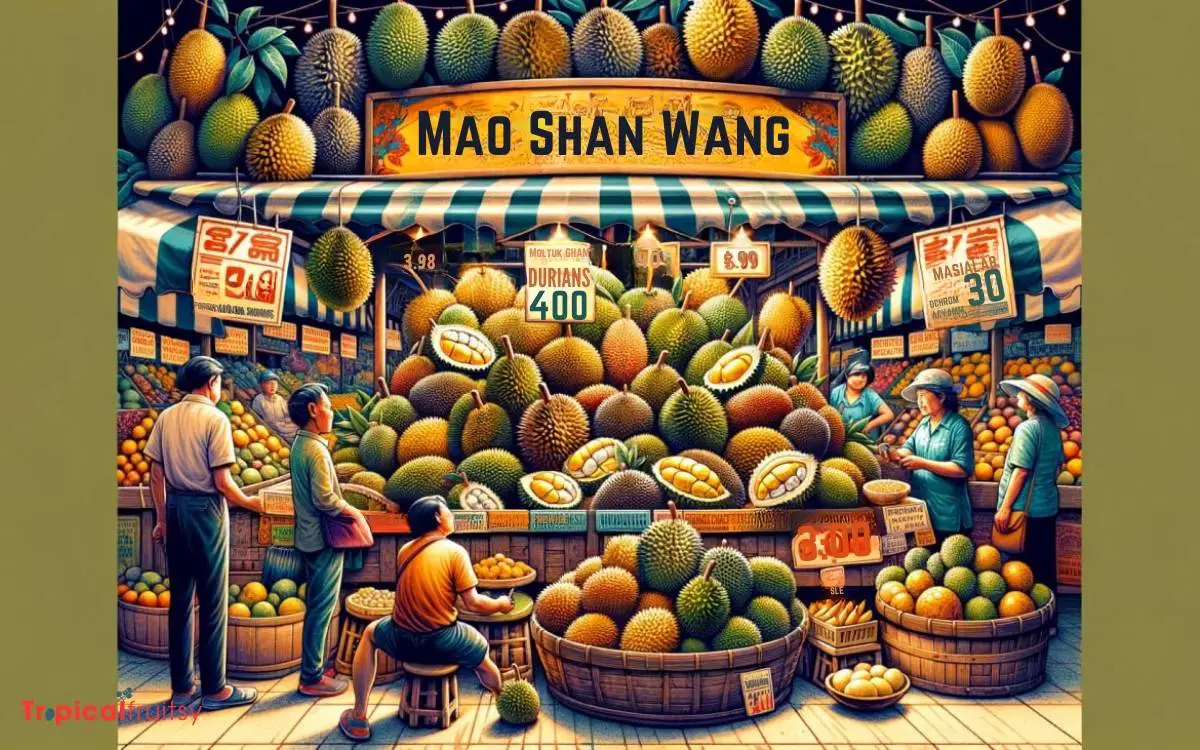
Key Takeaway
Mao Shan Wang Durian Price Guide – Factors & Costs
| Factor | Description | Impact on Price |
|---|---|---|
| Seasonality | Availability based on the harvesting season | Higher price in off-peak season, lower during harvest |
| Location | Import tariffs, transportation costs by region | Varies by region; international markets may see higher prices |
| Fruit Quality | Size, weight, and grade of durian | Premium grades and larger sizes command higher prices |
Unveiling Mao Shan Wang
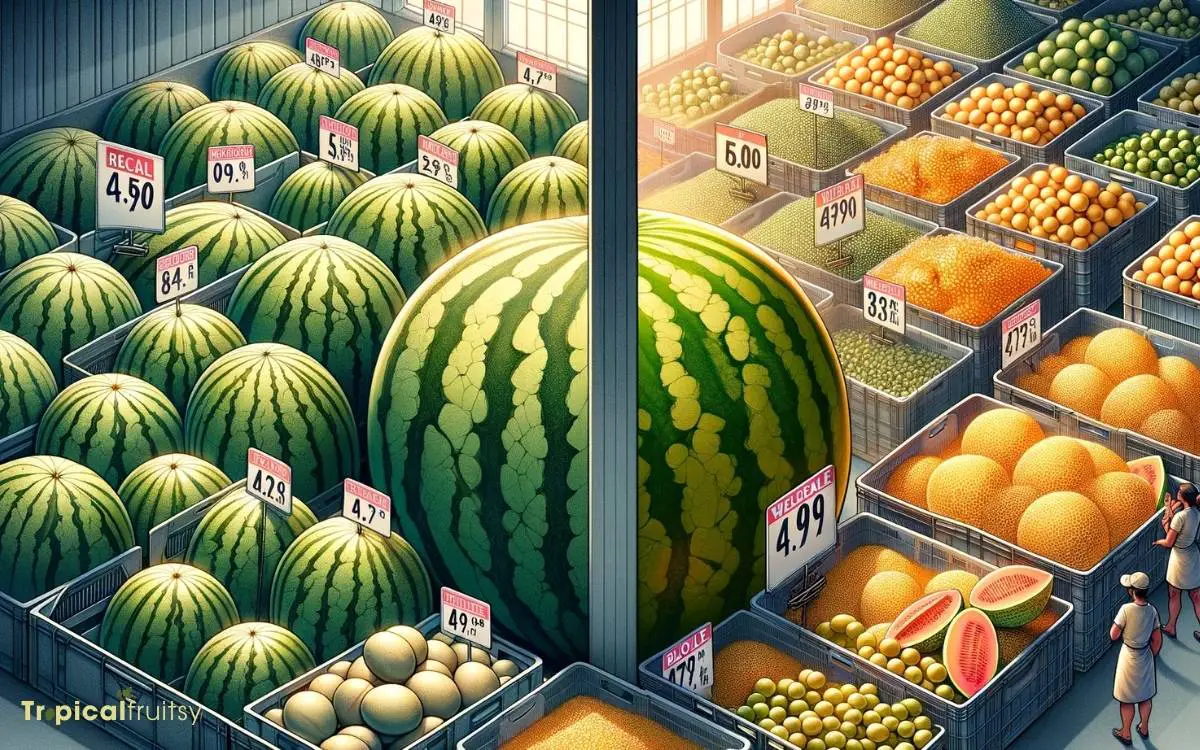
Renowned for its creamy texture and bittersweet taste, the Mao Shan Wang durian reigns supreme among Southeast Asia’s ‘King of Fruits’.
This coveted variety, also known as Musang King, is distinguished by its deep golden flesh and distinctive shape.
Connoisseurs cherish Mao Shan Wang for its complex flavor profile, which perfectly balances sweetness with a hint of savory bitterness, and its velvety consistency that melts in the mouth.
The durian’s allure lies in its potent aroma, which is intensely pungent yet pleasing to enthusiasts.
Grown primarily in Malaysia, the Mao Shan Wang’s rarity and high demand contribute to its premium status.
Discerning consumers are willing to pay top dollar for this exceptional fruit, which is often considered the pinnacle of tropical indulgence.
Historical Price Trends

The valuation of Mao Shan Wang durian has experienced notable fluctuations over the years, reflecting changes in supply, demand, and market conditions in Southeast Asia.
As the ‘King of Fruits’ grew in popularity, its market price became a reflection of its revered status among durian enthusiasts.
The pricing trends have been intricately tied to various factors including climatic conditions affecting harvest, the economic prosperity of consumer markets, and even the influence of durian-focused tourism.
Enthusiasts and connoisseurs alike monitor these trends with keen interest, recognizing that the value of this luxurious delicacy is as much tied to its unique, pungent taste as it is to its availability.
Seasonal Price Fluctuations
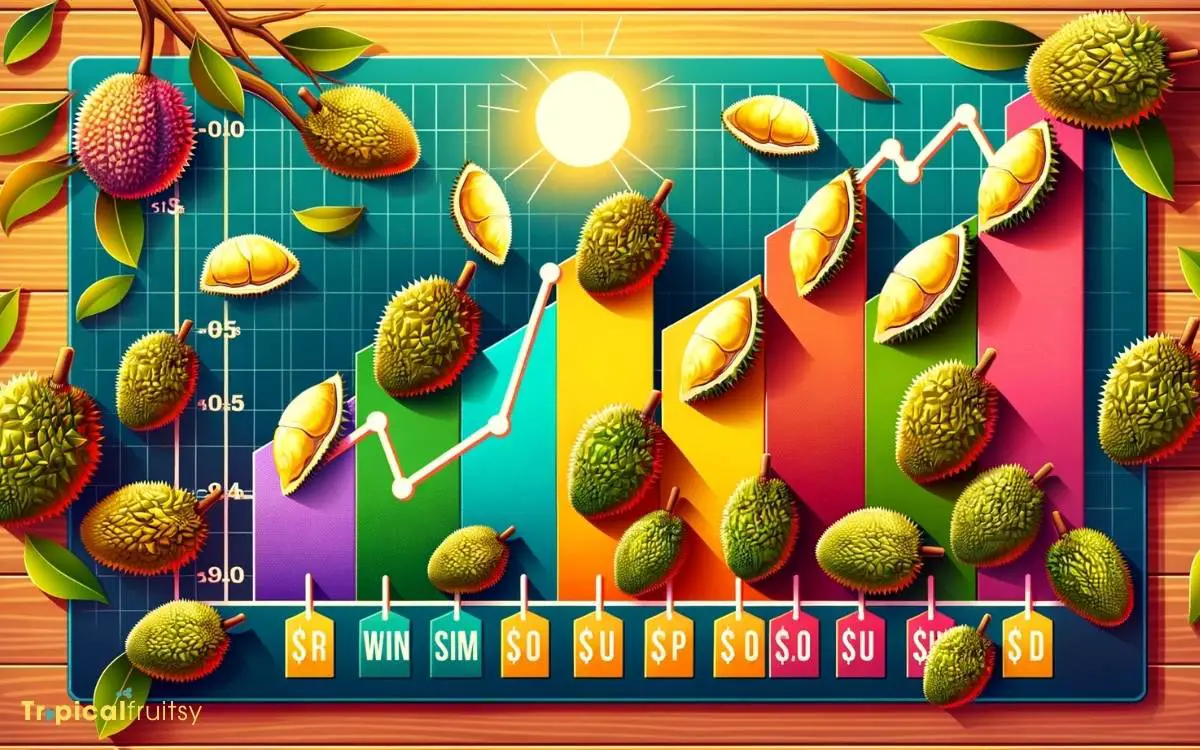
Throughout the year, prices for Mao Shan Wang durian fluctuate significantly, peaking during the off-season when supply is scarce and dipping when the fruit is in abundance.
This ebb and flow in pricing is a testament to the relentless pursuit of quality and the intricate balance of supply and demand.
The durian season, primarily spanning from June to August, brings forth a bountiful supply, and enthusiasts can indulge in these creamy, custardy delights at more affordable rates.
Conversely, during the off-peak months, the rarity of the fruit drives up the cost, making each luscious bite a luxurious treat.
Discerning aficionados understand that the price they pay is not merely for the fruit, but for the unparalleled sensory experience that only the finest Mao Shan Wang can provide.
Regional Price Variations
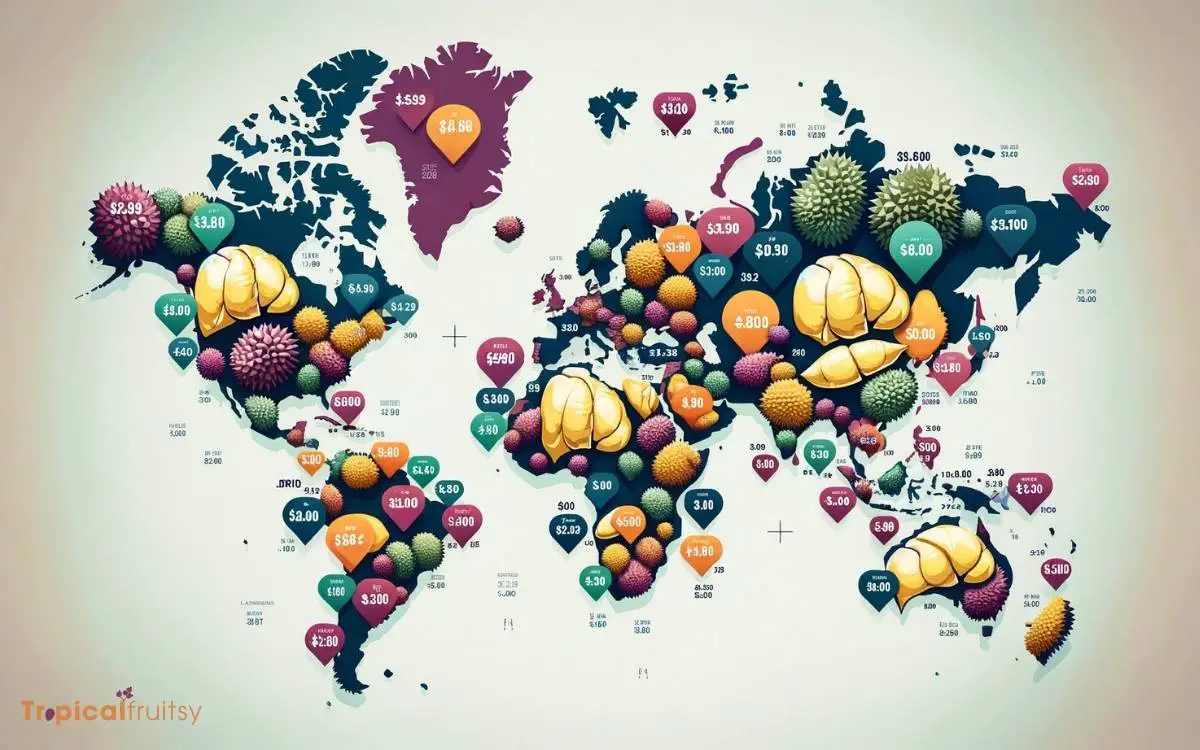
The price of Mao Shan Wang durian is subject to significant regional disparities, largely dictated by local demand and the proximity to sources of abundant harvests.
In areas where the appetite for this ‘King of Fruits’ is voracious, prices can soar, reflecting the willingness of consumers to pay premium rates for its rich, creamy texture and potent aroma.
Conversely, regions enjoying a bountiful yield of Mao Shan Wang durians may experience more competitive pricing, as local markets are saturated with the product, making it more accessible to a broader demographic.
Geographic Demand Influence
Analyzing regional demand reveals significant price variations for Mao Shan Wang durian across different markets.
The prized ‘King of Fruits’ commands a premium, and its market value is a reflection of intricate economic dynamics shaped by geography.
Consider these key factors explaining regional price discrepancies:
- Local Production Levels: Areas closer to durian farms, like Malaysia’s Pahang state, often enjoy lower prices due to reduced transportation and logistics costs.
- Cultural Appetite: In regions with a longstanding tradition of durian consumption, such as Singapore and parts of China, demand surges, driving up prices especially during peak seasons.
- Import Duties and Regulations: Countries with stringent import regulations or high tariffs can see escalated costs, making Mao Shan Wang a luxury item for affluent consumers.
Understanding these factors offers insight into the complex web of supply and demand influencing Mao Shan Wang durian prices globally.
Local Harvest Abundance
In regions experiencing a bountiful Mao Shan Wang durian harvest, prices tend to be markedly lower due to the increased local supply.
This abundance reflects the wonder of nature’s generosity, offering a feast for the senses and the soul. The sweet, creamy flesh of these durians becomes a symbol of communal joy and shared experiences.
| Region | Harvest Abundance | Emotional Appeal |
|---|---|---|
| Pahang | High | Gratitude |
| Johor | Moderate | Anticipation |
| Penang | Low | Yearning |
Enthusiasts of this ‘King of Fruits’ revel in the seasonal windfall, indulging in the rich, custard-like texture and complex flavor profile that only a fresh, locally harvested Mao Shan Wang can offer.
As we celebrate the local harvest, we must also consider the individual durian’s characteristics.
Size and Weight Considerations
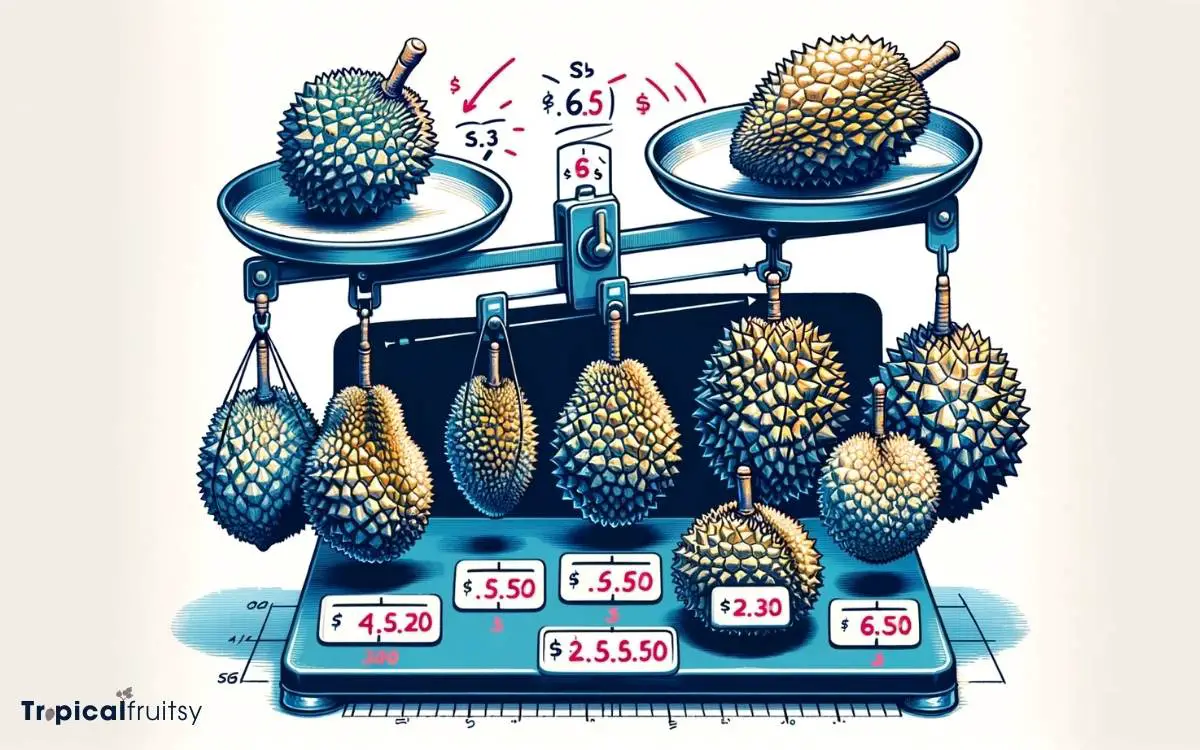
Regarding Mao Shan Wang durians, their size and weight significantly influence the overall cost.
These prized fruits can vary considerably, with the larger specimens offering more flesh and potentially a more immersive tasting experience.
For the connoisseur of this ‘King of Fruits’, understanding these variables is essential to making an informed purchase.
Here are three key points to consider:
- Average Size: Mao Shan Wang durians typically range from 1.5 to 3 kg, affecting both price and yield.
- Pricing Structure: Sellers often price durians by weight, making larger durians more expensive but potentially better value.
- Weight to Flesh Ratio: A heavier durian doesn’t always mean more edible flesh; the thickness of the husk plays a role.
Quality and Grade Assessment
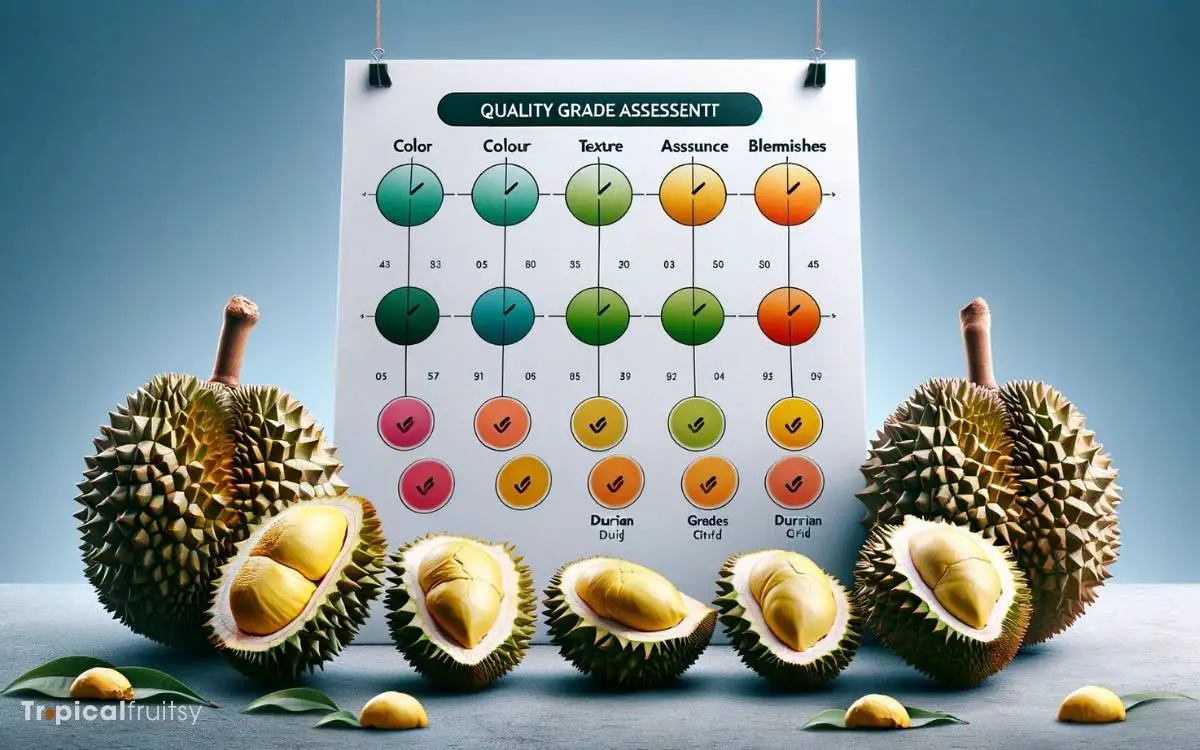
Beyond size and weight, the durian aficionado must also consider the quality grade of Mao Shan Wang, which directly impacts both flavor and market price.
The grading process for these coveted fruits involves meticulous examination by seasoned experts, who scrutinize the durian’s shape, color, and texture of the husk, as well as the firmness and aroma of the flesh.
Only those with a rich, creamy texture, vibrant golden hue, and the signature bittersweet symphony of flavors receive the top-tier status.
This sensory appraisal ensures that connoisseurs are presented with a durian that promises an unparalleled gastronomic experience.
The premium grade of Mao Shan Wang durians commands a higher price, reflecting the exceptional indulgence they offer to the true durian enthusiast.
Retail Vs. Wholesale Pricing
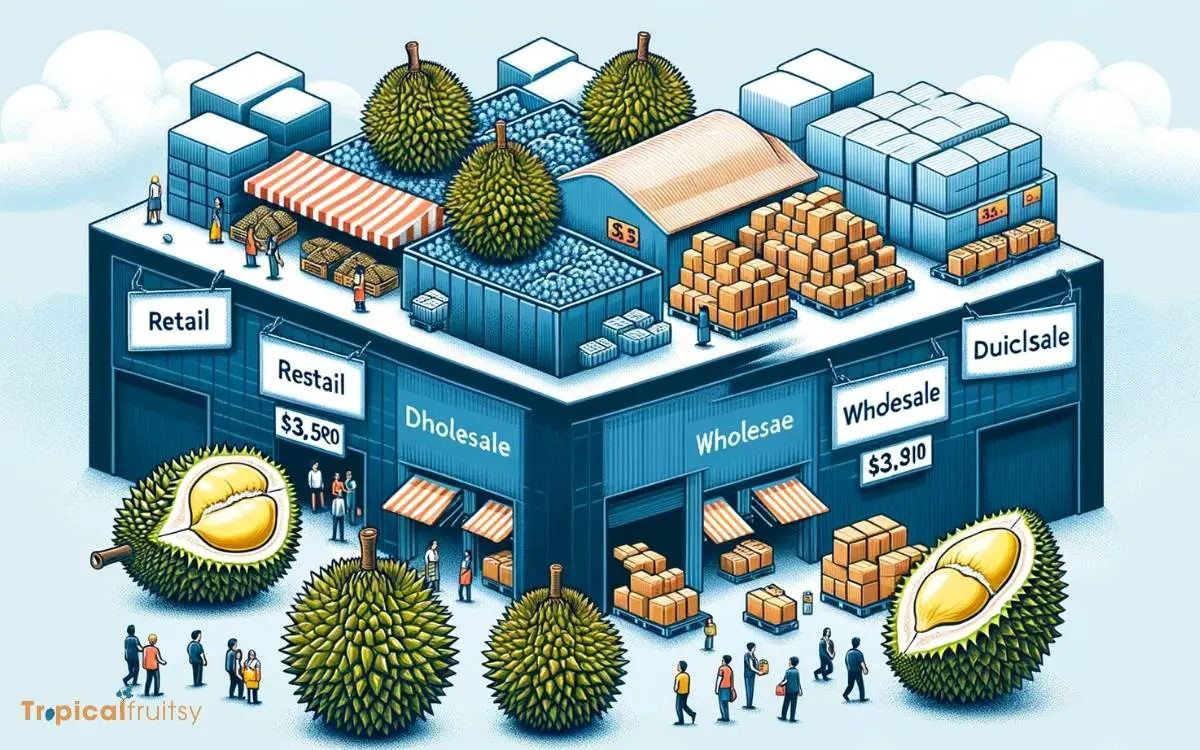
In the realm of Mao Shan Wang Durian transactions, the dichotomy between retail and wholesale pricing significantly impacts consumer choices and market dynamics.
Retail purchasers often navigate a higher price point, reflecting the added costs of storage, handling, and smaller quantity sales, whereas wholesalers enjoy reduced rates that come with bulk purchasing—a boon for those planning to redistribute or process the fruit further.
A detailed examination of price comparison and the inherent advantages of bulk buying reveals critical insights into the economics driving the durian trade.
Price Comparison
When comparing retail and wholesale prices for Mao Shan Wang durians, significant differences emerge due to factors such as purchase volume and distribution channels.
Volume Discounts: Wholesale purchases typically involve larger quantities, which translates into lower prices per unit due to volume discounts.
Retail prices, by contrast, cater to individual consumers and are often marked up to cover the higher costs of retail operations.
Distribution Costs: Retailers incur additional costs for store operations, staffing, and marketing. These costs are factored into the retail price, making it higher than wholesale prices, where such expenses are minimized or shared across more units.
Market Dynamics: Prices are also influenced by market demand and availability. Retail prices can fluctuate more frequently based on local demand, while wholesale prices tend to be more stable, reflecting broader market trends.
Bulk Buying Benefits
Bulk buying Mao Shan Wang durians offers distinct advantages, as consumers can enjoy substantial savings through wholesale pricing compared to individual retail purchases.
By purchasing in larger quantities, aficionados of this “King of Fruits” not only mitigate the cost per unit but also ensure a consistent supply for personal enjoyment or commercial purposes.
The contrast in pricing structures between retail and wholesale avenues is significant, reflecting economies of scale and the reduced overheads that wholesalers can offer.
Here’s a comparative table to illustrate the benefits:
| Quantity | Retail Price Per Unit | Wholesale Price Per Unit |
|---|---|---|
| 1-5 kg | $25/kg | N/A |
| 6-10 kg | $23/kg | $20/kg |
| >10 kg | $22/kg | $17/kg |
Embracing bulk purchases paves the way for durian lovers to indulge in Mao Shan Wang’s creamy, bittersweet allure more economically.
Import Costs and Tariffs
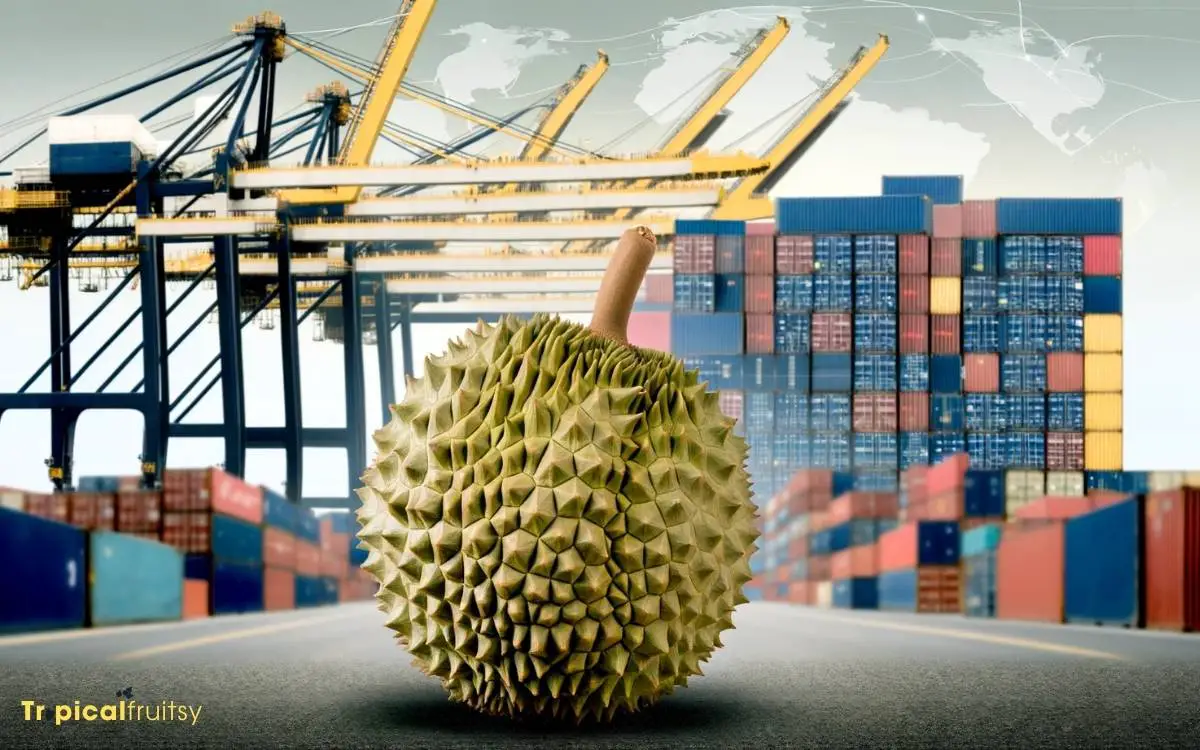
Considering import costs and tariffs, the price of Mao Shan Wang durian is significantly influenced by the regulations and duties imposed by the importing country.
These costs can vary widely and are crucial to understanding the final market price of this sought-after delicacy.
To keep you engaged, consider these three pivotal factors:
- Variable Tariffs: The import duty percentage can differ based on trade agreements and the importing country’s tariff schedule.
- Shipping Costs: The distance and transportation method (air or sea freight) substantially impact the overall cost.
- Regulatory Fees: Inspection, quarantine, and other compliance-related expenses also contribute to the import cost.
These aspects are vital in appreciating the intricate journey Mao Shan Wang durians undergo before reaching consumers.
Future Price Predictions

Given the factors influencing current market prices, the future price predictions for Mao Shan Wang durian suggest potential fluctuation driven by changes in international trade policies, consumer demand, and climatic conditions affecting harvest yields.
As connoisseurs of this ‘King of Fruits’ eagerly anticipate the coming seasons, the industry must grapple with the intricate dance of supply and demand, alongside the whims of nature.
To illustrate this dynamic, consider the following table which encapsulates key factors that could shape the future pricing landscape:
| Factor | Potential Impact on Price |
|---|---|
| International Trade Policies | Increases due to tariffs |
| Consumer Demand | Fluctuates with preference |
| Climatic Conditions | Decreases with good harvest |
Conclusion
In the dynamic tapestry of the global fruit market, Mao Shan Wang durians reign as the ‘King of Fruits,’ their value undulating with the seasons and regions.
Careful consideration of size, weight, and quality underpins their pricing structure, with discerning assessments distinguishing between retail and wholesale paradigms. Import costs and tariffs further sculpt the financial landscape.
As forecasts whisper of future trends, aficionados and investors alike navigate this complex matrix, anticipating the next shift in the durian dominion’s golden value.




